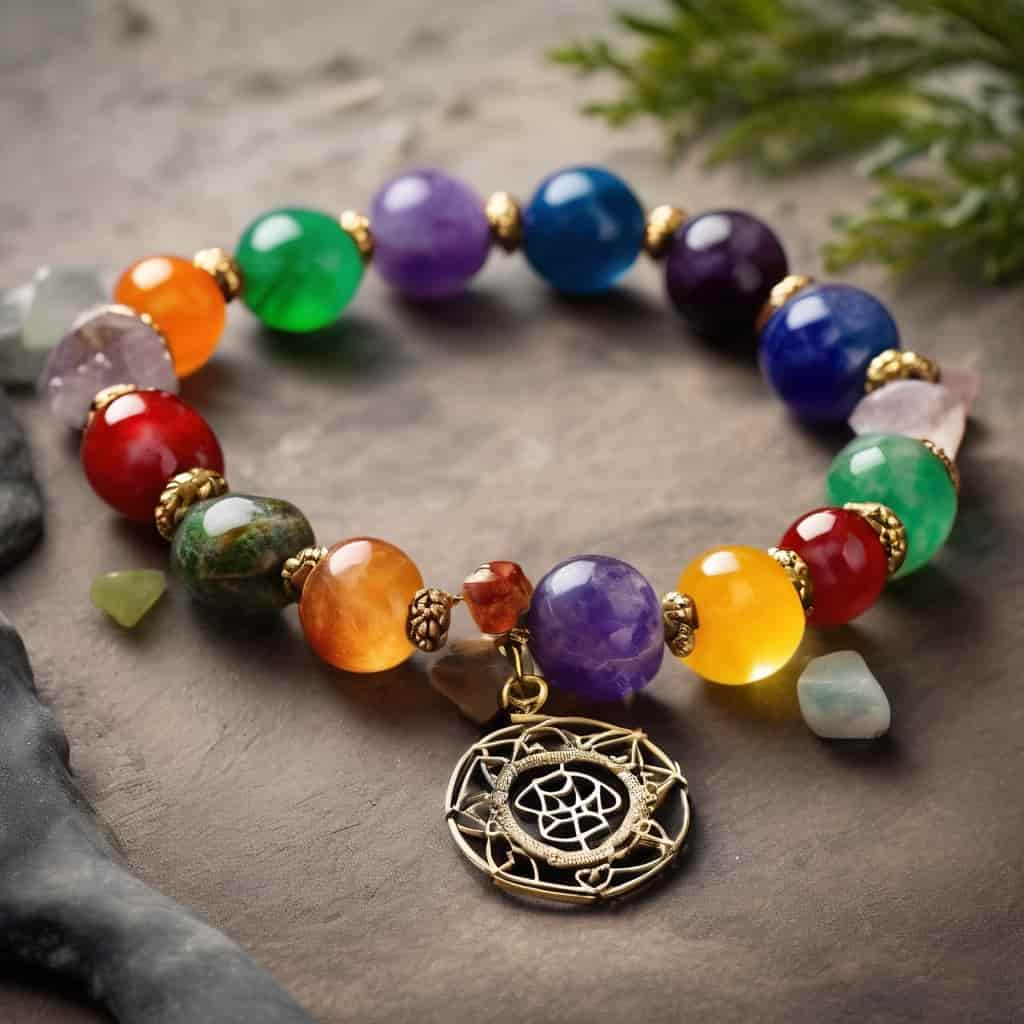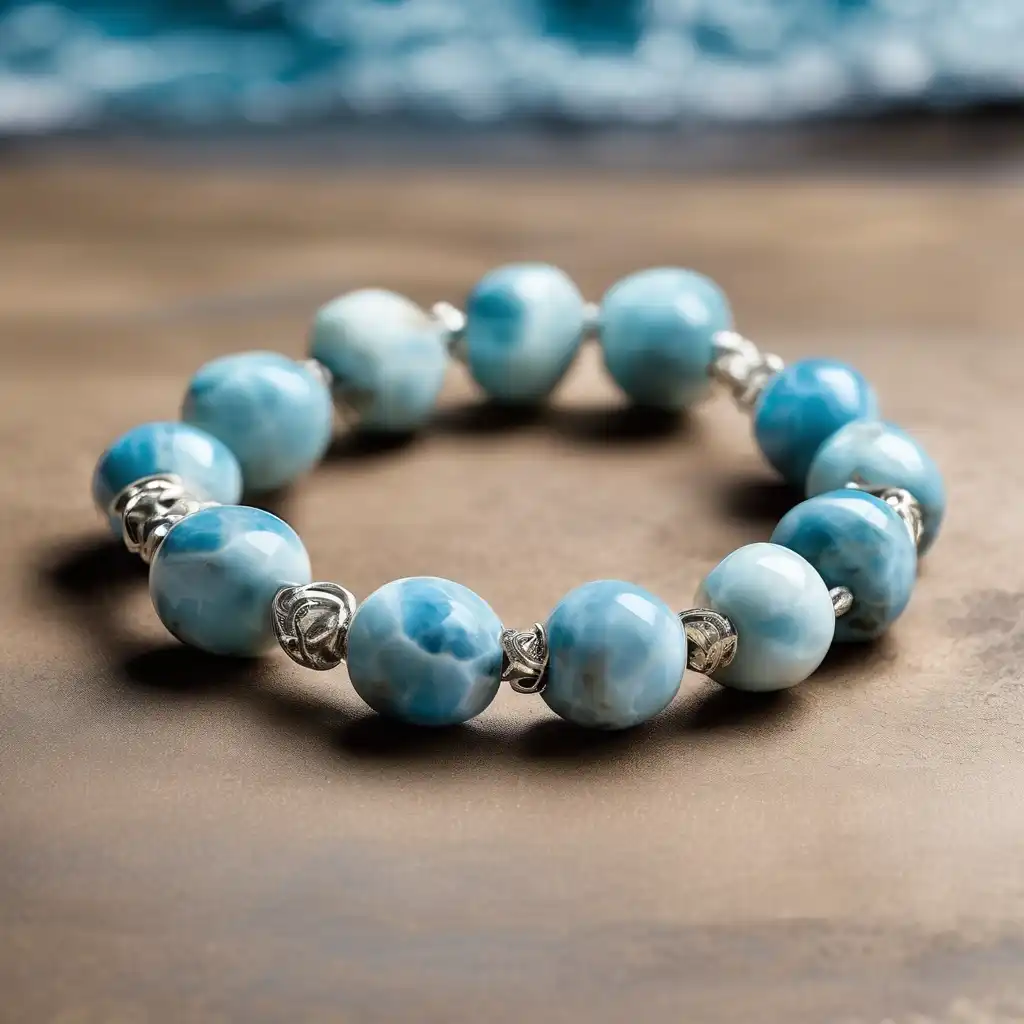Sodalite vs Lapis Lazuli: How to Tell Them Apart and Choose the Right Crystal for You
Why Do People Often Mistake Sodalite for Lapis Lazuli?
If you’ve ever browsed a crystal shop or bought a deep blue bracelet online, chances are you’ve come across the classic conundrum: sodalite vs lapis lazuli. At first glance, they appear nearly identical—both are stunning blue stones, often polished to a glassy sheen, with white streaks running across the surface. But don’t let their looks fool you. While their visual similarities are real, these two stones couldn’t be more different beneath the surface. That’s why the sodalite vs lapis lazuli confusion is so common, even among seasoned collectors.
The confusion typically starts with their color. Lapis lazuli is known for its rich, royal blue tone—sometimes even with hints of violet—and is often sprinkled with golden flecks of pyrite that catch the light beautifully. Sodalite, on the other hand, tends to have a softer, slightly grayer or cooler blue hue, often accented with milky white veins of calcite. Without seeing them side by side, it’s simple to mistake one for the other, especially in poor lighting or with dyed stones on the market.
Visual Similarities and Market Mislabeling
One of the biggest problems in the sodalite vs lapis lazuli debate is mislabeling. Many vendors, especially in mass-market settings, sell sodalite under the name “lapis lazuli” either due to a lack of knowledge or increase profit margins. Why? Because lapis lazuli generally commands a higher price thanks to its historical prestige and rarity, especially when it comes from top-tier Afghan mines.
Sodalite is often dyed to appear more like lapis lazuli. These dyed stones can be confusing even to experienced collectors, as the blue becomes more vivid and the contrast with the white veins more dramatic—closely mimicking the look of lapis. But here’s the thing: authentic lapis lazuli usually has a grainy texture, and if you look closely, you’ll often spot tiny golden sparkles from pyrite inclusions. Sodalite never contains pyrite. That one visual cue—gold specks versus pure blue-and-white patterns—can help you spot the difference.
The Crystal Energy Community and Common Confusion
The confusion isn’t just limited to gemstone sellers. Within spiritual and metaphysical circles, the sodalite vs lapis lazuli mix-up is surprisingly common. Some practitioners will use sodalite during deep meditations, believing it to be lapis. Others might buy a lapis lazuli necklace thinking they’re investing in sodalite’s calming, communication-enhancing properties. While both stones carry powerful vibrations, they do so in different ways—and choosing the right one for your personal journey can make a big difference.
Imagine trying to improve your intuition or connect to higher realms with a stone that’s better suited for grounding your logic and verbal expression. That’s not to say sodalite is inferior—it’s just made for different work. That’s why understanding the sodalite vs lapis lazuli distinction isn’t just about looks—it’s about alignment, resonance, and purpose.
Why Your Intuition Might Still Be Right
Interestingly, many crystal enthusiasts are intuitively drawn to one stone or the other, even when they’re unsure of which . That’s a testament to the subtle energetic differences between the two. You might find yourself picking up a piece of sodalite because you feel anxious and need mental clarity. Or maybe your hand lingers over a piece of lapis lazuli because you’ve been seeking spiritual answers or want to trust your instincts more deeply.
In both cases, you’re choosing the right stone for what you need—even if you don’t realize it yet. But as you deepen your crystal practice, knowing the specifics can help fine-tune your experience. You’ll know when to reach for sodalite versus when lapis lazuli is the better choice. The more consciously you compare sodalite vs lapis lazuli, the more confident you’ll become in choosing what aligns with your path. And in those moments, the sodalite vs lapis lazuli confusion fades, replaced by intentional, empowered use.
Final Thoughts on First Impressions
Let’s be clear: both sodalite and lapis lazuli are incredible stones in their own right. They just happen to wear similar coats. Think of it like two friends who wear the same color shirt but have entirely different personalities. Recognizing those differences is the first step in building a relationship with your crystals. And once you know what makes sodalite vs lapis lazuli truly unique, you’ll never look at a blue stone the same way again.
What Are the Mineral and Physical Differences Sodalite vs Lapis Lazuli?
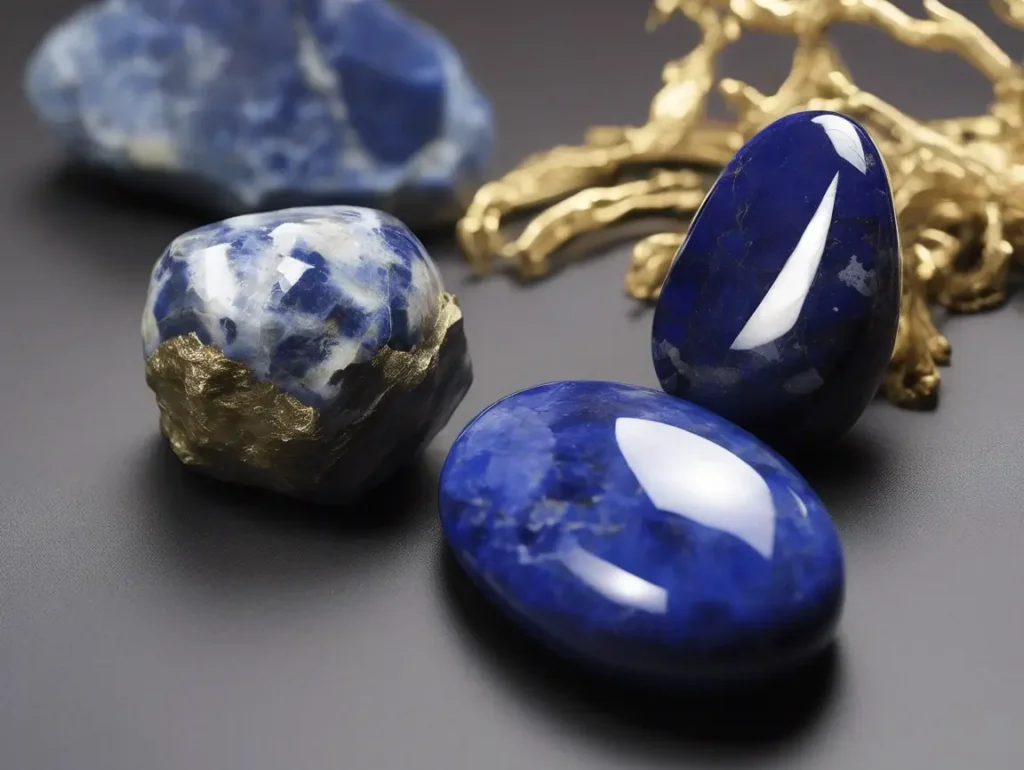
On a mineralogical level, sodalite vs lapis lazuli is a comparison of two very different stones—despite their outward resemblance. Despite sharing a blue palette, their inner structures, origins, and geological identities are vastly different.
Lapis lazuli isn’t a single mineral. It’s a rock composed of several different minerals working together. Its primary component is lazurite, the deep-blue mineral responsible for the signature royal hue. But it doesn’t stop there. Lapis also contains calcite (white patches), pyrite (gold flecks), and sometimes other trace minerals, like diopside or sodalite itself. This blend gives lapis its variegated texture—more layered, more complex, and sometimes less stable in appearance.
Sodalite, by contrast, is a true mineral, part of the feldspathoid group. Its chemical formula (Na₈(Al₆Si₆O₂₄)Cl₂) reveals a sodium-rich composition that gives it its smoother, more uniform blue tone. It often contains inclusions of white calcite veins, but not the speckled golden shimmer that lapis offers. In terms of geological identity, sodalite forms in igneous rocks like nepheline syenite, while lapis is found in metamorphosed limestones.
When comparing sodalite vs lapis lazuli, this difference in mineral structure affects not only appearance but also hardness, finish, and how each stone wears over time. This is why understanding the mineral foundation of sodalite vs lapis lazuli is crucial when making an informed crystal choice.
UV Light tests, Hardness, and Fluorescence
One of the easiest ways to tell sodalite vs lapis lazuli apart is through a UV light test. Under ultraviolet light, high-quality sodalite often glows with an orange or yellow fluorescence—a property rarely seen in lapis lazuli. This characteristic makes sodalite easy to detect in darkness or through scientific identification methods. Lapis, lacking this feature, stays dark under UV rays.
Hardness is another big clue. On the Mohs hardness scale, sodalite measures between 5.5 and 6, while lapis lazuli ranges more widely between 3 and 6.5, depending on the mix of minerals inside. This feature means lapis can sometimes feel softer or more porous, especially when it contains more calcite. For jewelry lovers, this matters—softer stones scratch more easily and need gentler care.
Sodalite, with its crystalline integrity and compact form, holds polish better and is slightly more resistant to wear. So if you’re looking for a blue crystal to use in rings or high-contact accessories, sodalite might actually be more practical.
Surface Texture and Light Reflection
Lapis lazuli has an almost matte finish when unpolished, and even when polished, it doesn’t shine like a faceted gemstone. It has a slightly waxy or oily luster due to its calcite content. The golden pyrite specks embedded in the surface can create a dazzling effect under natural light, giving it a starry-night appeal.
In contrast, sodalite often has a vitreous (glass-like) luster, especially when well-polished. Its white veins can shimmer softly, and the overall color feels “cooler”—almost like the blue of a clouded sky. In the sodalite vs lapis lazuli discussion, sodalite’s uniformity and light behavior often make it more visually calming and easier to pair with other stones.
Durability and Maintenance
Another important factor in the sodalite vs lapis lazuli comparison is durability. Because lapis is a composite rock, it can be sensitive to water, oils, and even sweat. If a piece contains a higher percentage of calcite, it might degrade more quickly or react to household cleaning chemicals. Daily wear and improper storage often lead to color fading in untreated lapis.
Sodalite, while not immune to damage, is generally more chemically stable. However, it doesn’t like acid—avoid exposing it to lemon juice, vinegar, or other acidic substances. Still, in daily use, sodalite tends to be less fussy, making it more suitable for beginners or casual wearers.
How Environment Affects Each Stone
High-altitude mines, particularly the renowned Sar-e-Sang mines of Afghanistan, have been harvesting lapis lazuli for over 6,000 years. Other sources include Chile and Russia. These geological environments produce rich, pigmented lapis—but quality varies widely depending on the proportion of lazurite.
Sodalite, on the other hand, is more globally available. Canada, Brazil, Greenland, and India all produce high-grade sodalite, and it often comes from volcanic zones or alkaline igneous rock formations. Because of this, sodalite tends to be more affordable and widely distributed, although premium pieces—particularly those with strong color and minimal veining—still carry value. So whether you value rarity or availability, the sodalite vs lapis lazuli balance ultimately depends on your purpose and preferences.
Summing Up the Structural Differences
So, when it comes to sodalite vs lapis lazuli, here’s a quick summary:
- Composition: Lapis is a rock (multi-mineral); sodalite is a single mineral.
- Hardness: Sodalite is slightly harder and more durable.
- Color: Lapis is royal to violet-blue with gold; sodalite is cooler blue with white.
- Fluorescence: Sodalite glows under UV; lapis does not.
- Price and accessibility: Lapis is often pricier; sodalite is more budget-friendly.
Recognizing these differences can save you from buying a misrepresented stone—and help you select the one that resonates best with your purpose, whether it’s for jewelry, spiritual healing, or aesthetic appeal.
What Do Sodalite and Lapis Lazuli Symbolize Spiritually?
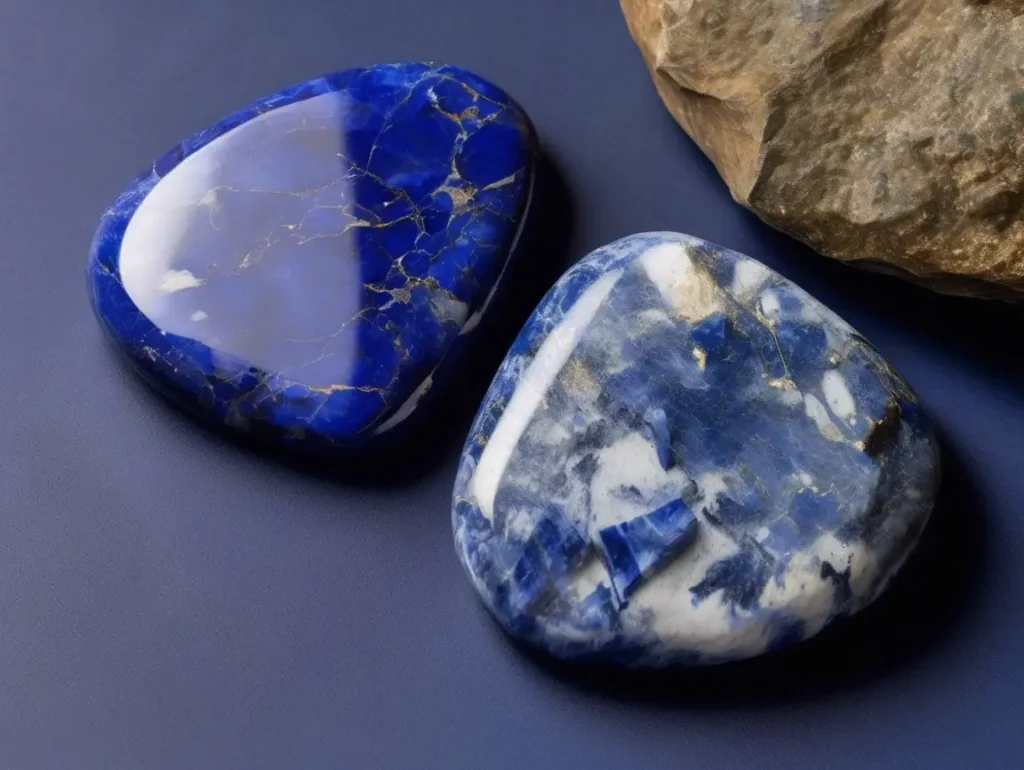
Not all blue stones possess the same level of crystal energy. The comparison of sodalite vs lapis lazuli in the metaphysical world reveals fascinating distinctions that go far beyond appearance. While they may share some overlapping qualities, each carries its own energetic blueprint, chakra alignment, and emotional resonance. Understanding those differences can help you choose the right stone for your personal growth, meditation, or healing journey. The spiritual qualities of sodalite vs lapis lazuli may appear similar at first, but their deeper energy signatures offer completely different outcomes.
Lapis Lazuli: Truth, Wisdom, and Inner Vision
Historically, lapis lazuli has been treasured for its spiritual potency. From ancient Egypt to Renaissance Europe, it has been considered a gateway to inner truth and divine connection. This stone is especially revered for its ability to stimulate the third eye (brow chakra) and the crown chakra, which govern intuition, insight, spiritual awareness, and connection to the higher self.
Many users describe lapis as having a grounding but elevated energy. It doesn’t just flood your field with light—it invites introspection, encourages honesty, and helps uncover the truths you might be avoiding. That’s why in the discussion of sodalite vs lapis lazuli, lapis often takes the crown for those seeking deep transformation, spiritual awakening, or dream work.
Lapis also carries a powerful vibration of wisdom and authenticity. Its association with the planet Venus gives it a soft, nurturing side—but it also brings clarity and spiritual discipline. It’s a stone for seekers, truth-tellers, and those yearning for a more meaningful life path.
Sodalite: Rational Clarity and Emotional Balance
Let’s now examine sodalite, a stone that resonates more with the throat and heart chakras, promoting clear communication, emotional regulation, and calm decision-making. Its energy is less mystical and more accessible, fostering harmony between the head and heart.
In spiritual practice, sodalite is valued for its ability to soothe anxiety, stabilize mood, and quiet overactive thoughts. It helps you speak your truth, but in a composed and thoughtful way. If you’re working on building emotional resilience or improving relationships through communication, sodalite might be your perfect ally.
When comparing sodalite vs lapis lazuli, think of sodalite as the diplomat and lapis as the philosopher. Sodalite bridges the internal world with the external, helping you express what’s inside without fear or emotional chaos. It’s the crystal you reach for before a hard conversation, a public speech, or any time your voice needs to come from a place of centered truth.
Chakra Alignment and Elemental Energy
As mentioned earlier, lapis lazuli is strongly linked to the brow (third eye) and crown chakras. These are the upper energy centers associated with spiritual vision, expanded consciousness, and divine guidance. Its deep indigo color mirrors the vast unknown, making it an ideal companion for those engaging in deep meditation, shadow work, or dream interpretation.
Lapis is considered a water-element stone, but with an ethereal aspect tied to air and spirit. Its energetic frequency is said to vibrate at level 3, aligning with creative exploration, truth-seeking, and insight.
Sodalite, in contrast, grounds into the throat and heart chakras, helping bridge intellect and emotion. It’s associated with both water and air elements, bringing together intuitive flow with clarity and logic. Its vibration resonates at level 4, which is all about balance, self-acceptance, and authentic communication.
In the sodalite vs lapis lazuli energy comparison, lapis often feels more vertical—connecting sky to earth—while sodalite moves horizontally, integrating inner balance and interpersonal harmony.
Which Crystal Works Best for Meditation?
This is a common question, especially among beginners: which one should I use for meditation—sodalite or lapis lazuli? The answer depends entirely on your goal.
If you’re seeking to deepen your spiritual insight, connect with your higher self, or access your inner voice, lapis lazuli is your stone. It works well in quiet meditation, particularly when placed on the forehead or held in the hand while lying down. Its energy feels ancient, wise, and expansive.
But if your goal is to calm your mind, relieve emotional stress, or enhance mental clarity, sodalite will serve you better. It has a calming, stabilizing effect that’s great for centering, journaling, or breathwork. You can place it near the throat or heart area or keep it close during emotionally charged conversations. In the realm of mindful practices, this is where the sodalite vs lapis lazuli distinction becomes deeply personal.
And here’s the beautiful part: in the sodalite vs lapis lazuli journey, you don’t have to choose just one. These stones can complement each other when used intentionally. For example, meditating with sodalite before a challenging conversation and then using lapis afterward to reflect and integrate the experience creates a powerful emotional-spiritual cycle.
Manifestation and Intention Setting
You can also use both stones in manifestation rituals, albeit in different styles. Lapis lazuli is excellent for setting big-picture, life-altering intentions—like discovering your true purpose, seeking inner peace, or starting a new spiritual path. It connects you to the cosmic “why.”
Sodalite, on the other hand, is better for practical, clarity-driven intentions—like speaking up at work, mending a relationship, or creating emotional stability. It grounds your “how.”
Whether you’re manifesting peace or clarity, the sodalite vs lapis lazuli approach depends on how you want to direct your energy.
In terms of sodalite vs lapis lazuli, think of sodalite as the planner and lapis as the visionary. Use them according to your phase in the journey.
Sodalite vs Lapis Lazuli: Which One Is More Suitable to Wear?
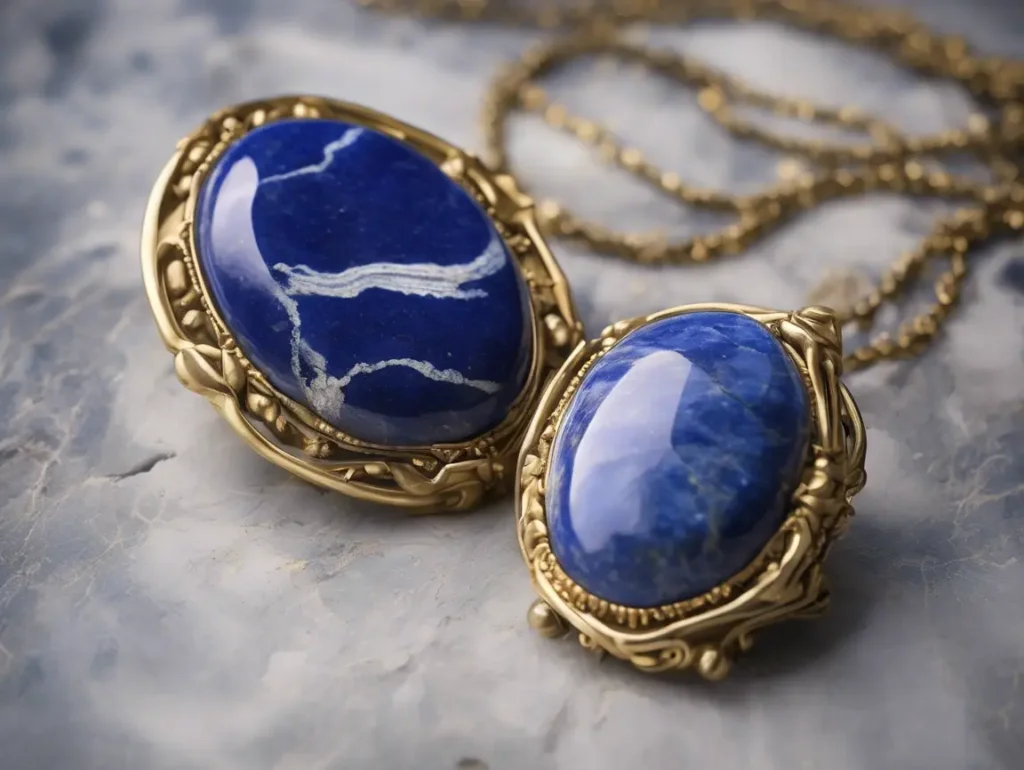
People often inquire about the compatibility of sodalite and lapis lazuli when exploring blue gemstones. Given their similarities, some people worry the energies might clash or that using both may be redundant. But in truth, combining these two stones can actually enhance your energetic balance, especially if you understand their core functions. The synergy between sodalite vs lapis lazuli becomes more apparent when you explore their effects on both the emotional and spiritual layers.
While they may look alike on the surface, their spiritual roles differ enough to create a complementary relationship. Sodalite provides calm, clarity, and confidence in communication. Lapis lazuli, on the other hand, opens the intuitive channels, sharpens perception, and promotes spiritual growth. When used together, sodalite grounds your words in calm logic, while lapis connects those words to a higher truth. That’s why in the ongoing discussion of sodalite vs lapis lazuli, the real answer might just be, why not both?
Sodalite vs Lapis Lazuli, Which Is Better?
If you’re looking for a definitive winner in the sodalite vs lapis lazuli debate, the truth is—it depends on you.
Here’s how to think about it:
- Go with sodalite if you struggle with overthinking, anxiety, or expressing your feelings. It’s a “mind-heart translator” and helps calm racing thoughts so you can speak more clearly and act more mindfully.
- Choose lapis lazuli if you’re on a spiritual path, looking for truth, or feel disconnected from your intuition. It helps illuminate the “why” behind your thoughts and encourages self-awareness.
Sodalite feels like a guide walking beside you, while lapis feels like an ancient sage whispering from within.
From a chakra standpoint, sodalite works on the lower mental/emotional levels (throat and heart), while lapis elevates you to the higher consciousness centers (brow and crown). Many energy practitioners recommend starting with sodalite if you’re newer to crystal work, and progressing to lapis once you’re ready to deepen your spiritual practice. This tiered approach reflects how sodalite vs lapis lazuli function as steps on a personal growth journey—from clarity to revelation.
In the practical world, sodalite is also more affordable, widely available, and less prone to damage—making it ideal for daily use. People often save lapis lazuli for ceremonial or intentional moments due to its delicate nature and high cost. So in terms of cost and durability, sodalite often wins. But in terms of symbolic and historical prestige, lapis has no equal.
What Happens When You Wear Sodalite?
If you’ve ever worn sodalite for an extended period, you might’ve noticed its gentle but steady impact on your mood and mind. Most people describe the sensation as a kind of “mental cooling effect”—like the brain fog lifts, and emotional clutter slowly dissolves. It’s subtle but undeniable.
In emotional situations, sodalite helps you pause before reacting. It doesn’t suppress your feelings; it gives you space to process them. Many users report feeling more emotionally intelligent, more present in conversations, and more articulate in high-stress settings. Some even say sodalite helps them “speak from the soul without losing control.”
On a physical level, sodalite is often associated with lower blood pressure, reduced headaches, and better sleep, especially when worn close to the skin. While scientific evidence is lacking, personal accounts are strong enough to warrant exploration. Compared to lapis, many users find the physical effects of sodalite more immediate, which reinforces the sodalite vs lapis lazuli distinction as one of practical versus transcendental experience.
In the sodalite vs lapis lazuli comparison, sodalite is the more “practical” stone—it offers comfort, clarity, and control in day-to-day interactions.
Can I Sleep with a Sodalite Crystal?
Yes, and many people do. Sleeping with sodalite under your pillow or near your bed can create a more serene sleep environment. It’s especially helpful if your mind tends to race at night or if you’re prone to emotionally charged dreams.
Because sodalite’s energy is cooling and balancing, it won’t overstimulate the mind like some high-vibration stones (such as amethyst or moldavite). Instead, it helps you process the day’s emotional content more gently—sometimes even through dream symbolism.
However, you can also use lapis lazuli for sleep, although its energy tends to be more intense. Some people experience vivid dreams or spiritual messages when sleeping with lapis, which might not be ideal if you’re already mentally overloaded.
So again, in sodalite vs lapis lazuli, think of sodalite as the soft light that lets you wind down, while lapis is the flashlight that shines deep into your subconscious.
How to Layer and Use Them Together
If you’re curious about using both stones in harmony, here are some practical tips:
- Layer them as jewelry: Try wearing sodalite near your throat (like a choker or pendant) and lapis near your third eye (e.g., headband or earrings).
- Alternate daily use: Wear sodalite during work or social interactions and lapis during quiet reflection or journaling.
- Meditate with both: Hold sodalite in your left hand (emotional self) and lapis in your right (higher self) during meditation. Let the energies meet in the center.
This kind of mindful blending turns the sodalite vs lapis lazuli conversation into a powerful collaboration—and allows you to experience the full spectrum of what these stones have to offer.
Is It Real? Spotting Fake Sodalite vs Lapis Lazuli
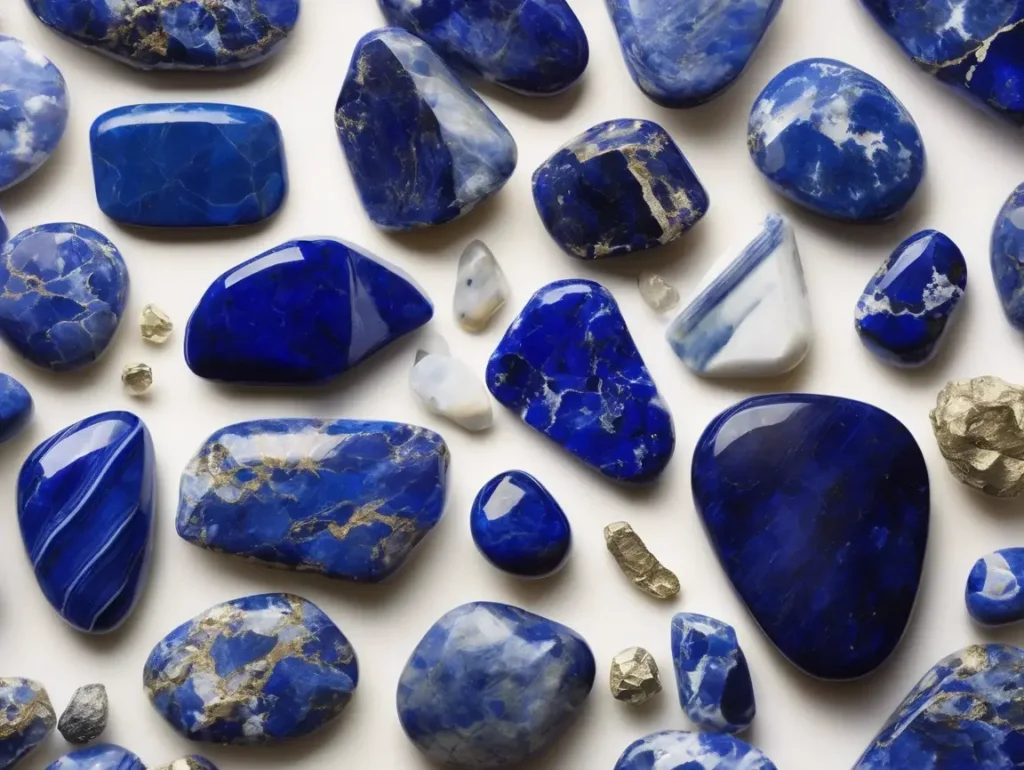
In the world of crystals, authenticity matters—not just for the value of your purchase, but for the energy you’re inviting into your life. And in the case of sodalite vs lapis lazuli, this distinction becomes even more important because the stones look so similar that counterfeiting is rampant—particularly online and in low-end shops.
Let’s face it: most people wouldn’t spot the difference between sodalite and a low-grade piece of dyed lapis lazuli. Likewise, lapis that’s overloaded with calcite might resemble sodalite more than the prized ultramarine blue it’s known for. This is why being able to tell which is real and which is fake is essential—whether you’re buying a bracelet, raw chunk, or spiritual talisman.
Color and Texture: First Signs of Authenticity
Start with color. Authentic lapis lazuli typically has a deep blue to violet-blue tone, often flecked with small metallic gold spots. What are those golden flecks? That’s pyrite, one of the key identifiers of high-quality lapis. You might also find a few white calcite streaks—but they should be minimal in top-grade specimens.
Sodalite, by contrast, has a more uniform soft blue or gray-blue color, with pronounced white veining caused by calcite or quartz. It rarely—if ever—includes golden pyrite. So if the stone you’re looking at is blue with white streaks and no trace of metallic sparkle, it’s likely sodalite. From a visual standpoint, sodalite vs lapis lazuli reveals itself most clearly through this contrast of shimmer versus smooth.
In the sodalite vs lapis lazuli comparison, this detail alone—gold vs white inclusions—can help you identify the stone with surprising accuracy.
The UV Light Test: Sodalite’s Secret Glow
One of the coolest and most reliable tricks is to use a UV blacklight. Real sodalite glows—typically in orange or yellow hues—when exposed to UV light, thanks to its unique mineral composition. Lapis lazuli, on the other hand, doesn’t glow at all under UV. This makes the UV test one of the most foolproof methods for distinguishing sodalite vs lapis lazuli, especially if you’re dealing with polished pieces or tumbled stones.
It’s a small investment to buy a UV penlight, but if you’re serious about building a crystal collection—or if you run a shop—it’s absolutely worth it.
Price Points: Don’t Be Fooled by Overpriced Sodalite
Another key difference lies in pricing. Authentic, high-grade lapis lazuli can be costly, especially if it’s from Afghanistan, which produces some of the world’s finest specimens. Even small polished beads or cabochons can fetch significant prices.
Sodalite, by contrast, is far more abundant and generally much more affordable. If a vendor is trying to sell you a deep-blue stone with no gold flecks at a premium price and calling it lapis, be wary. You could be dealing with dyed sodalite, low-quality lapis, or even synthetic material. This pricing gap reinforces why the sodalite vs lapis lazuli decision often comes down to how much you value rarity versus accessibility.
In this regard, sodalite vs lapis lazuli becomes not just a matter of identity but of fairness, transparency, and trust in the seller.
Common Imitations and How to Spot Them
The most widespread fakes come in two forms:
- Dyed Sodalite or Howlite as ”“Lapis”—These stones are soaked in blue dye to mimic lapis lazuli. Over time, the dye can fade, and the stone may bleed when wet.
- Synthetic Lapis Lazuli—Man-made lapis often lacks the grainy texture and pyrite sparkle. It can look too perfect, with a flat tone and no natural imperfections.
To avoid getting scammed:
- Wipe with acetone—if it’s dyed, the color may rub off.
- Check for gold flecks—pyrite is difficult to fake.
- Ask about origin—authentic lapis usually comes from Afghanistan, Chile, or Russia. Sodalite is often from Brazil, Canada, or Greenland.
What Color Is Real Sodalite?
True sodalite ranges in color from light denim blue to deep grayish navy, sometimes with hints of lavender or greenish-gray. Its white veining is typically softer and more spread out than the sharp calcite streaks in low-quality lapis.
So if you’re holding a stone that’s a consistent medium blue with cloudy white lines—especially without sparkle—you’re likely looking at sodalite. That moment of comparing sodalite vs lapis lazuli side-by-side is often when true understanding clicks for crystal collectors.
In sodalite vs lapis lazuli, this visual nuance is often the easiest way to judge what you’re working with—especially if you’re shopping in person and don’t have a UV light handy.
How Much Is Sodalite Worth Compared to Lapis?
Because sodalite is more abundant and has fewer historical associations, it’s generally much more affordable. You can often find sodalite tumbled stones for under $5, while a similarly sized piece of lapis lazuli could cost ten times as much—especially if it’s high quality with minimal calcite and plenty of lazurite and pyrite.
That said, premium sodalite specimens (especially those with rare color formations or from specific locations like Greenland) can still command respectable prices in collector circles.
If your budget is tight, sodalite offers excellent value—especially for energy work. But if you’re investing in a long-term spiritual or artistic tool and want that sense of ancient prestige, lapis lazuli may be worth the splurge.
Frequently Asked Questions
Which is better, sodalite or lapis lazuli?
Neither stone is strictly “better”—they serve different purposes. Sodalite is excellent for emotional balance, clear communication, and calming anxious thoughts. Lapis lazuli, on the other hand, enhances intuition, spiritual insight, and inner truth. The real decision comes down to your personal needs at the moment. Often, using both creates a more holistic energy experience.
How do you tell the difference between sodalite and lapis lazuli?
Start by looking at color and texture. Lapis lazuli usually has a deeper, royal blue hue with golden specks of pyrite, while sodalite features a softer blue with cloudy white veins and no gold. Under UV light, sodalite often glows orange or yellow—lapis lazuli does not. This makes UV testing a handy tool in the sodalite vs lapis lazuli distinction.
Can you wear lapis lazuli and sodalite together?
Yes! These two crystals complement each other well. Sodalite grounds and calms the mind, while lapis lazuli elevates your thoughts and intuition. Many people layer them in jewelry or use them together in meditation to balance emotional expression and spiritual growth.
What happens when you wear sodalite?
Most users report feeling more emotionally centered, mentally focused, and better able to express themselves. It can reduce anxiety, ease communication blocks, and enhance logical thinking. Some also find it helpful in improving sleep and calming the nervous system.
Can I sleep with a sodalite crystal?
Absolutely. Sodalite is gentle and stabilizing, making it an ideal bedtime companion. Placing it under your pillow or near your bed can ease mental chatter, promote restful sleep, and help process emotions more peacefully during dreams.
Does sodalite glow under UV light?
Yes, natural sodalite often glows in orange or yellow tones under UV light due to its unique mineral content. Lapis lazuli does not glow, making this a reliable way to tell them apart.
How can you tell if sodalite is real?
Real sodalite has a relatively uniform blue-to-gray color with white streaks. It lacks sparkle and doesn’t have pyrite. Be wary of overly vivid or perfectly uniform stones—they may be dyed. A UV test and a wipe with acetone can help confirm authenticity.
How much is sodalite worth?
Sodalite is usually affordable, with prices ranging from a few dollars for tumbled stones to higher amounts for premium specimens. Compared to lapis lazuli, which is rarer and often more expensive due to its historical significance and aesthetic richness, sodalite offers excellent value for both beginners and seasoned collectors.
Conclusion: Choosing the Stone That Resonates With You
At the end of the day, the sodalite vs lapis lazuli decision is less about which stone is better and more about which one aligns with your current path.
If you’re seeking clarity, peace of mind, and confidence in communication, sodalite will be your reliable ally. If you crave deeper spiritual connection, inner vision, and a stronger sense of purpose, lapis lazuli might be calling you.
There’s no rule that says you must choose only one. These two powerful stones can work beautifully together—one grounding your thoughts in calm expression, the other guiding your spirit toward insight and truth.
In the world of crystals, the best decisions often come not from logic but from intuition. So hold both in your hand, close your eyes, and notice which stone your heart leans toward. That quiet pull is your answer.
Let sodalite vs lapis lazuli not be a debate, but a dialogue between reason and revelation—because sometimes, the most powerful tools are the ones that speak to both your mind and your soul.

